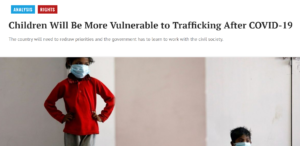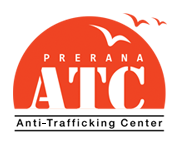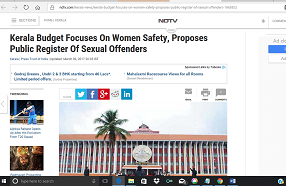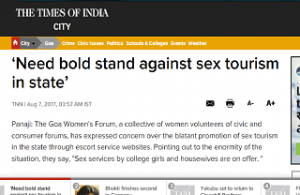Children Will Be More Vulnerable to Trafficking After COVID-19

Date: April 13, 2020
Location: India
The countrywide lockdown to combat COVID-19, while necessary (in a low-income, low-health-infrastructure country like India), thanks to its sudden declaration with less than four hours’ notice, is catastrophic for the poor who live day to day, who do not have well-stocked refrigerators and homes with separate rooms. There are no reserves saved for a rainy day. This is the precariat population which is one disaster, one illness away from falling deeper into poverty.
As this piece in the Guardian put it, if coronavirus doesn’t kill the poor, hunger will. Not China, not Italy, India has imposed the harshest lockdown with the least public-financed relief. This resulted in migrant workers, women, children and the elderly making a long walk home.
So if we do win the war on COVID-19, manage to flatten or reverse the curve and re-open the country, the economy will take a long time to revive, the informal sector will take even longer. Usurious money lending and consequent debt bondage will thrive. The cash crunch and job losses will result in a serious income squeeze, livelihoods crises amongst the informal daily-wage workers. The agriculture sector will undergo a deeper agrarian crisis, hitting the small and marginal farmers, the agricultural workers, the landless labourers too.
Children and families worldwide are experiencing disruptions to their environments with the closure of school services, childcare, job loss and limited to no access to health and other essential services in response to the pandemic. Children are now entirely reliant on their caregivers (wherever they are available) for nurturing care to meet their physical, emotional, social and cognitive development needs. With caregivers under stress for multiple reasons, the children may be more vulnerable to toxic stress, violence, exploitation and abuse.
Long periods of school shutdowns will adversely affect children’s access to education, nutrition (since the mid-day-meal scheme and the anganwadi meal under the Integrated Child Development Scheme have been major state programmes for child nutrition). The World Food Programme reports 300 million children globally will miss school meals amidst shutdowns. School shutdowns will also deprive children of the safety net that schools provide, the escape into the world of friends and learning, from the drudgery of their households
Though UNICEF says it is still early days to correctly predict the impact on women and children, there are some scenarios that play out after every health and humanitarian emergency of the COVID-19 kind. Child vulnerability will spike and manifest in multiple ways, for multiple reasons. Children could be orphaned if they lose one or both parents. Children would experience trauma, thanks to the job loss of parents, their family’s displacement and the long walk home and the police brutality they witnessed during the walk.
COVID-19 doesn’t respect class, caste or stature but it does hit the poorest, the precariats hardest, as BBC presenter Emily Maitlis stated while correcting the language around COVID-19 as a great leveller. Similarly, child vulnerability triggered by COVID-19 will also not respect class, caste or stature. While the rich children will be vulnerable in the confines of their homes, to cyber bullying, sexting and abuse from elders and parents, the poor children will also be vulnerable to hunger, malnutrition, conscription into the labour force and grooming and trafficking. And the poor children are more likely to fall through the cracks.
The clear and present danger of child trafficking
Child labour, street and working children’ numbers would spike, on the back of the battering of the informal sector, the Micro Small and Medium Enterprises (MSME) sector, where adult parents could have worked. Child labour will be sourced from the agricultural households too, considering the ever-deepening agrarian crisis we are witnessing unfold. Child labour and trafficking are two sides of the same coin. Children are trafficked first and then placed in labour either forced or for earning a sub minimal wage or in case of the more unfortunate ones, i.e. particularly girls and young boys, are forced into sexual exploitation. Usurious money-lending and debt bondage will also become a force-multiplier for sourcing child labour from the country-side, from desperate families for bondage and trafficking.
The intra-state, inter-state trafficking will increase, but it is unclear if international trafficking will spike. COVID-19 has resulted in sealed borders, because of the very nature of the pandemic. Hence globalisation might be re-set, borders won’t be closed, but they might not be as porous too. It will also offer an opportunity to strengthen implementation of the progressive inter-state migrant workers’ legislations, especially the 1979 Interstate Migrant Workmen Act.
Now, more than ever, the state-civil society collaboration will be necessary. In the prime minister’s address to the nation on March 24, he called upon citizens and civil society to feed the working class, the poor during the lockdown. This means the adversarial engagement and targeting of the non-profit sector, which the state machinery had indulged in, the weaponisation of FCRA (Foreign Contribution Regulation Act) amendments, will have to stop immediately. Hopefully there will be acknowledgement of the role of the non-profits, the CSOs, play in nation building and the collaboration possible between the state and civil society.
From a child protection angle, the NGOs, CSOs can be precious allies in building a cadre of barefoot advocates/active citizens, who recognise the tell-tale signs of drafting of children into labour, consequently trafficking and ensuring that there is last-mile delivery of education, nutrition, health, child protection programmes. The state machinery, the law and order machinery, the anti-human trafficking units will be super-stretched too with COVID-19 lockdown enforcement, hence collaboration will be even more valuable for the state apparatus.
Simultaneously the social safety nets, the relief programmes have to be amped up, aggressively done to reach the last family, so child vulnerability is addressed at root. To keep our children safe (in homes, in shelters, in camps, in the real world, in the cyber world), during the COVID-19 lockdown and beyond will require intention, public finance, collaboration and all hands on the deck.
Read The Wire (Source) Article here.
“It’s Saturday evening at the National Human Trafficking Hotline, and we’ve had non-stop calls since mid-afternoon. I know there are Read more
“It’s Saturday evening at the National Human Trafficking Hotline, and we’ve had non-stop calls since mid-afternoon. I know there are Read more



